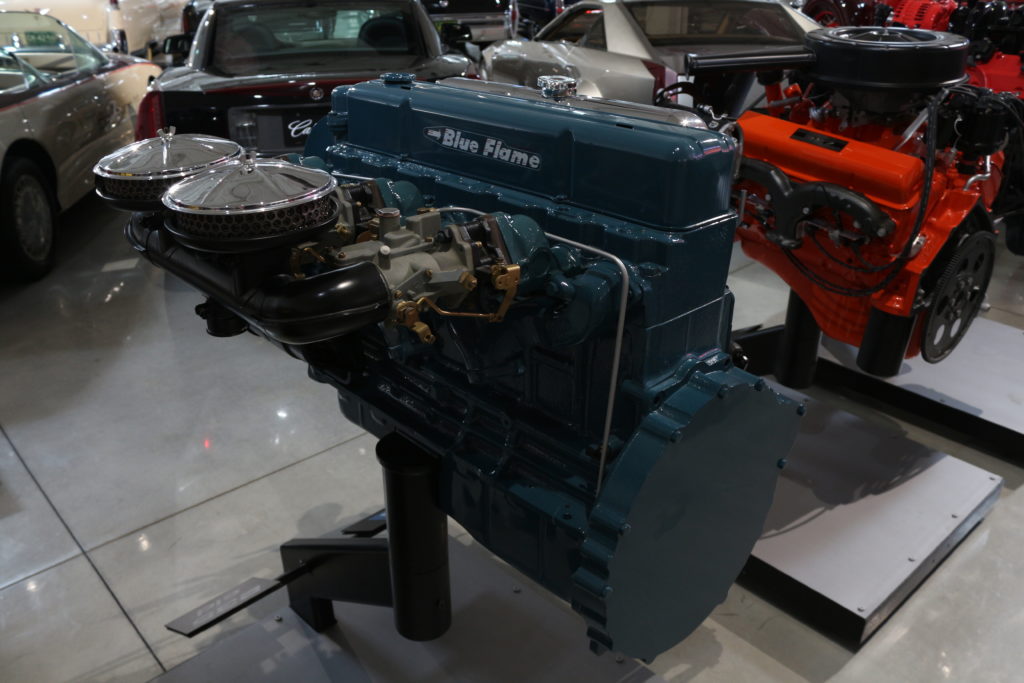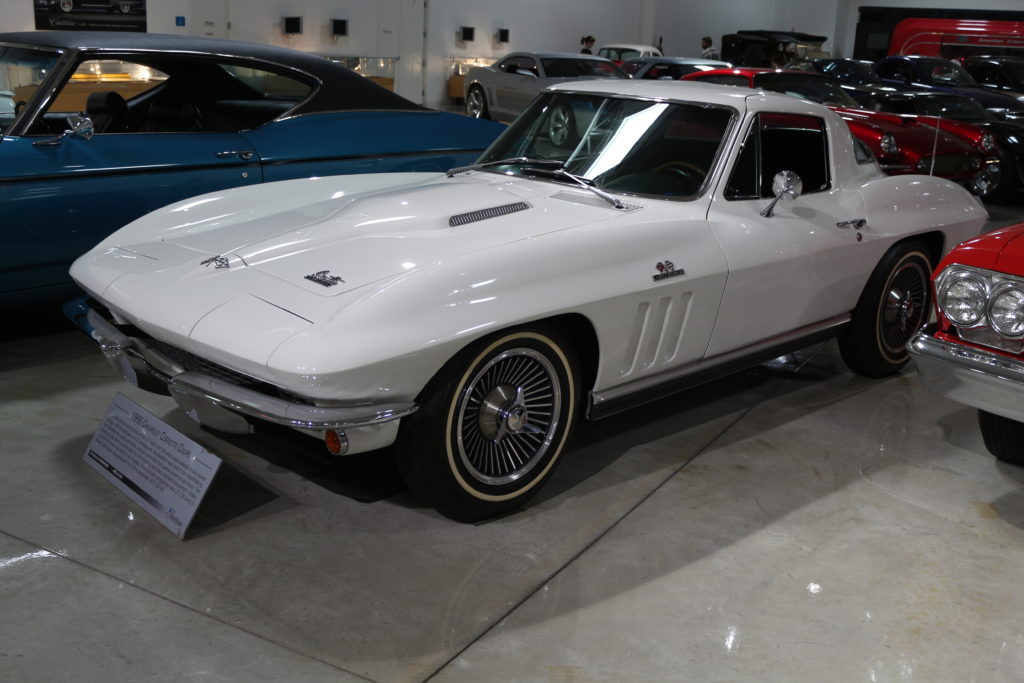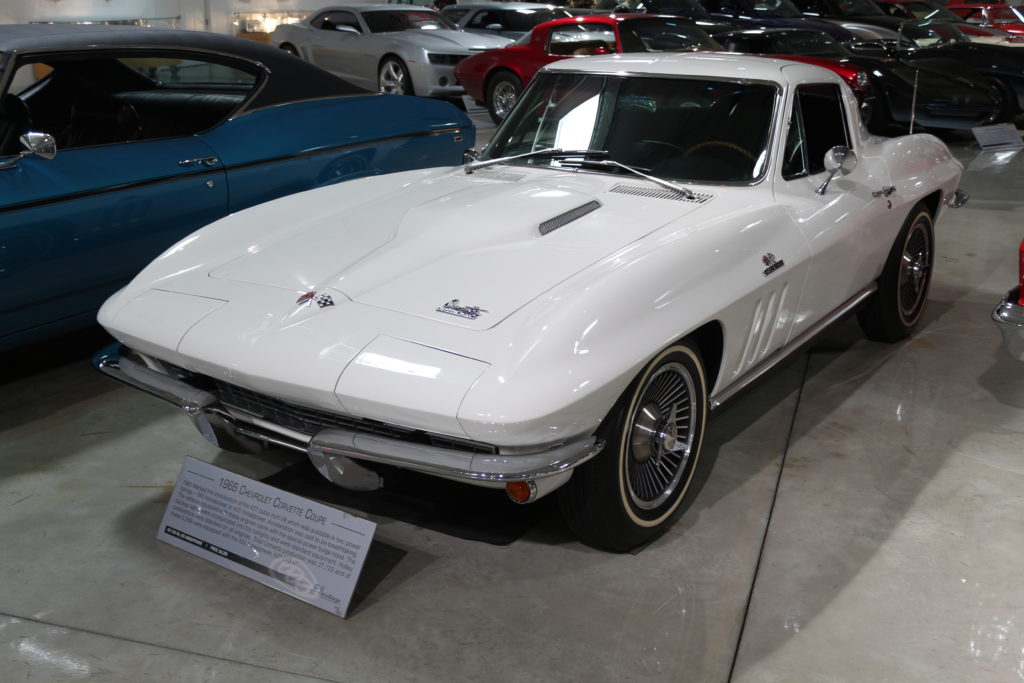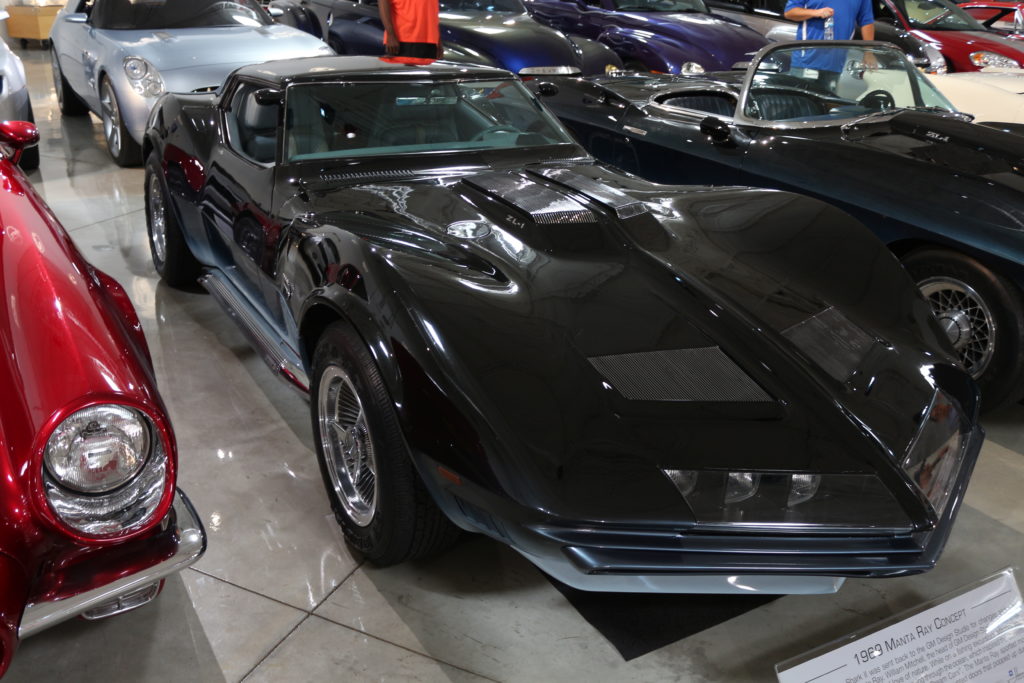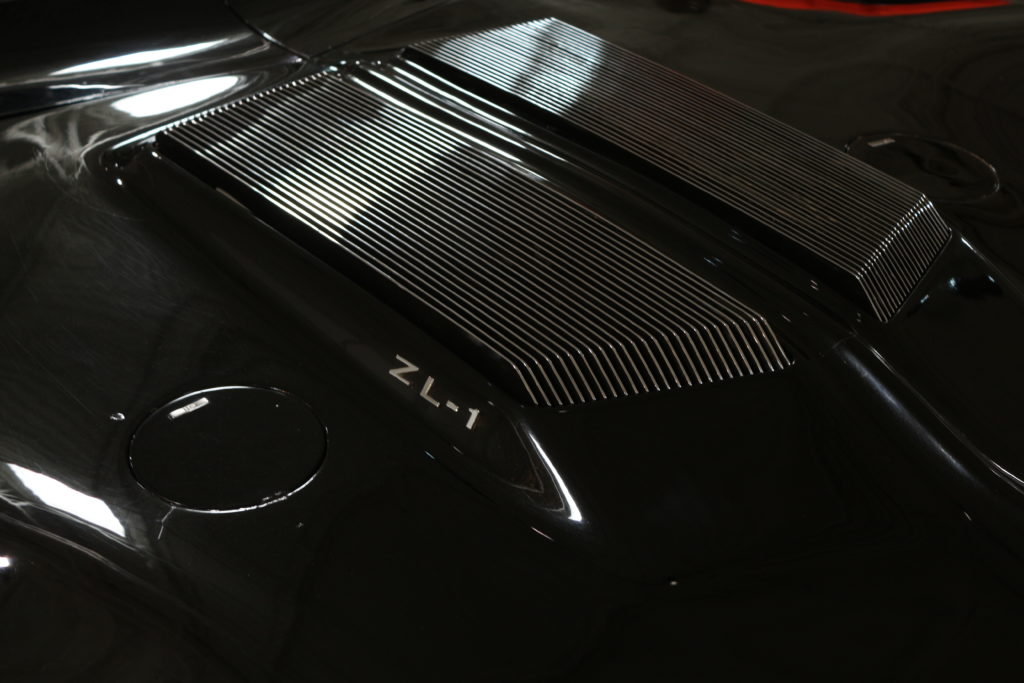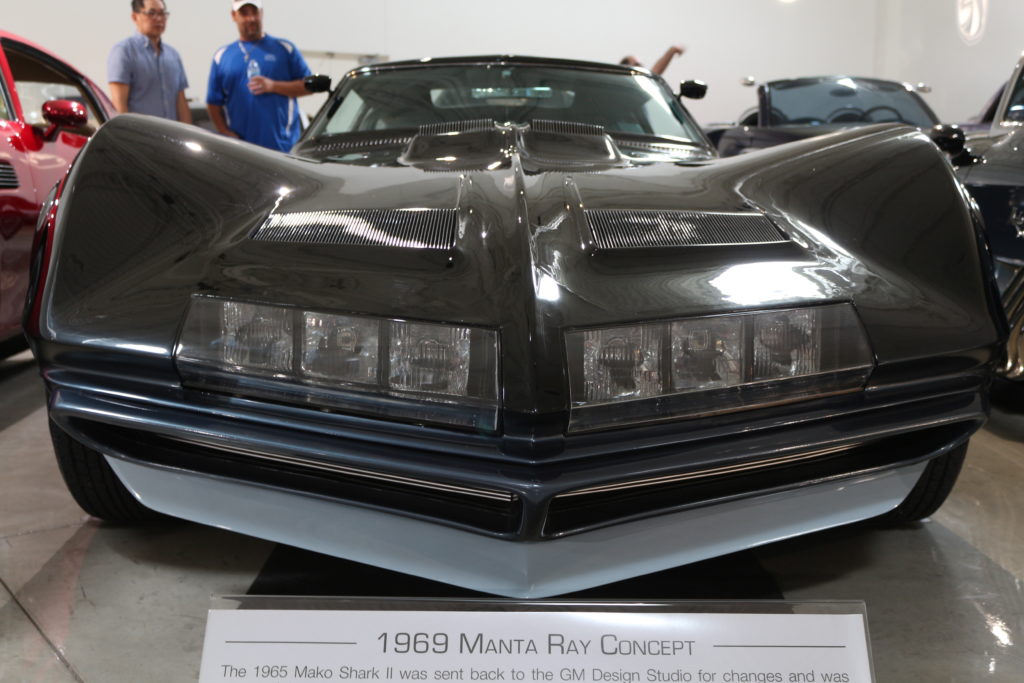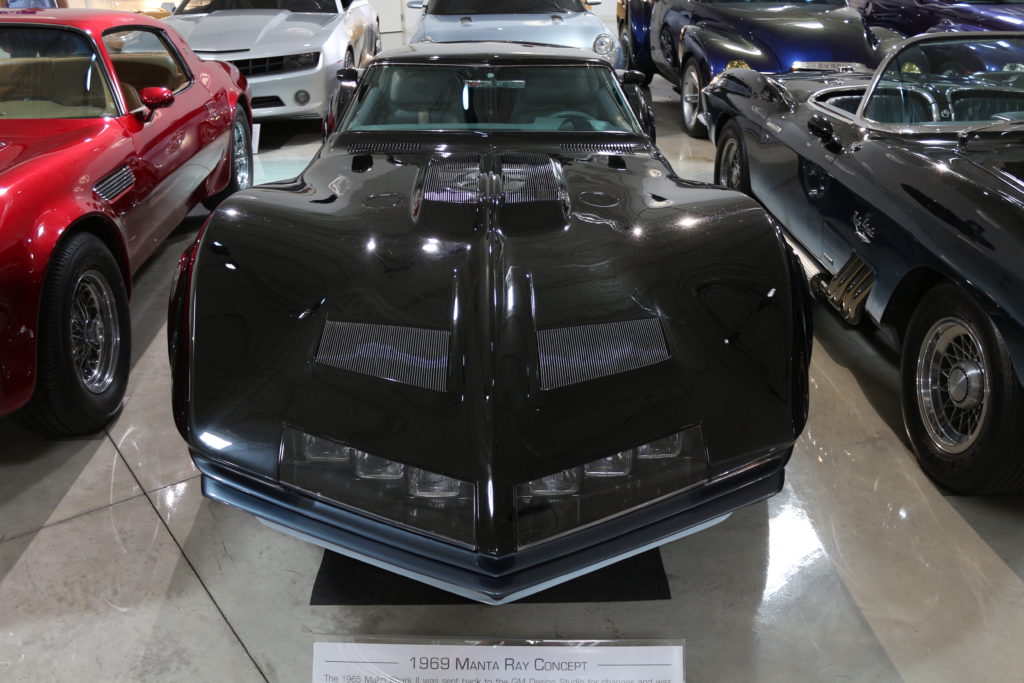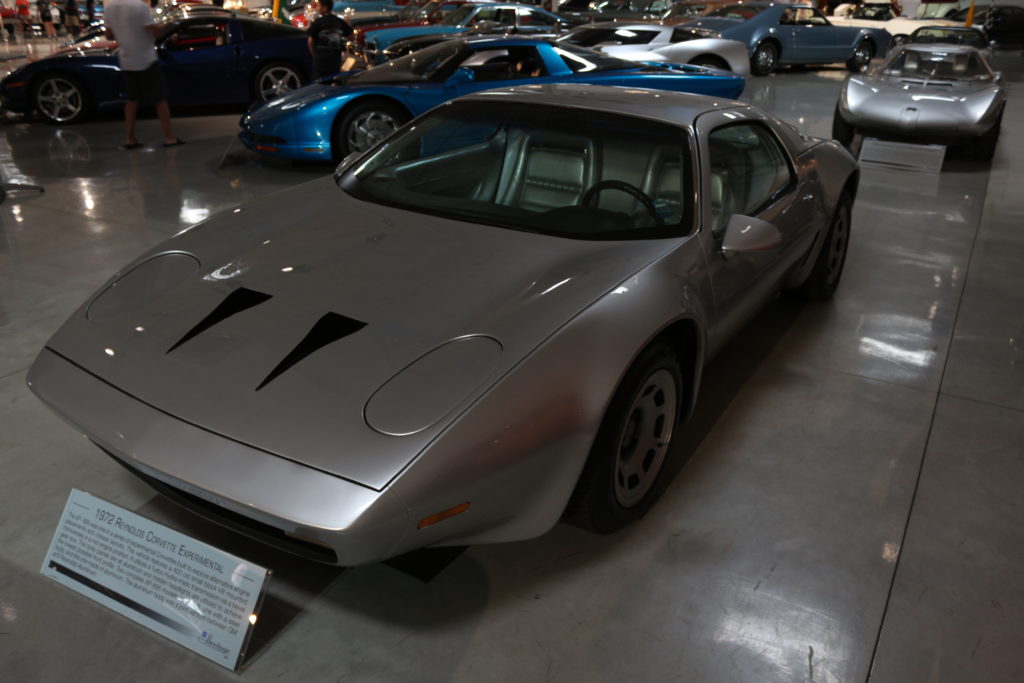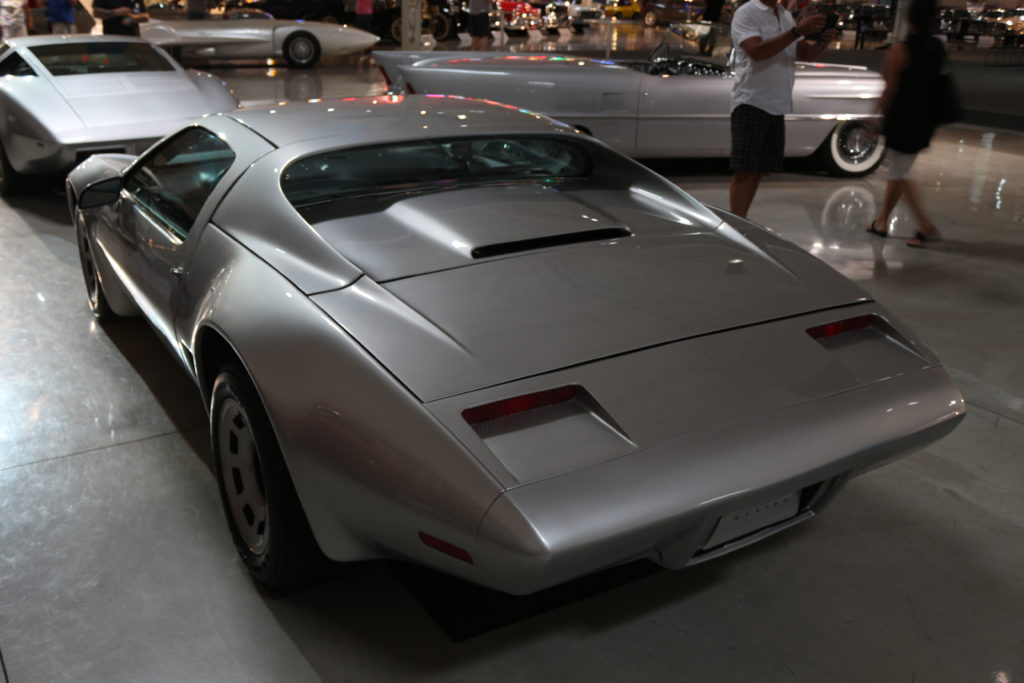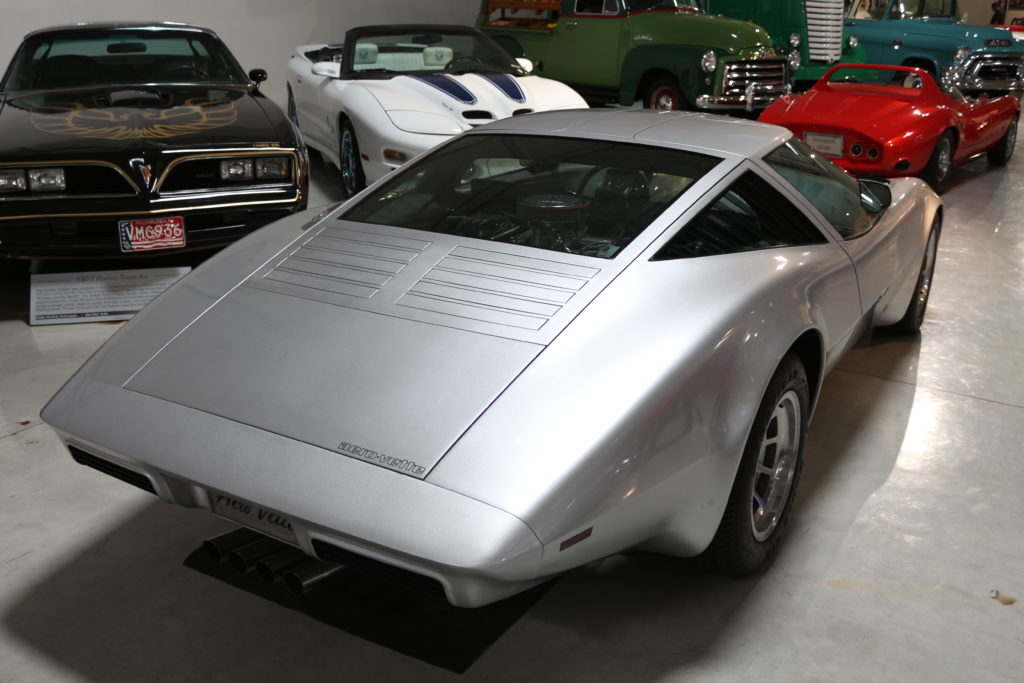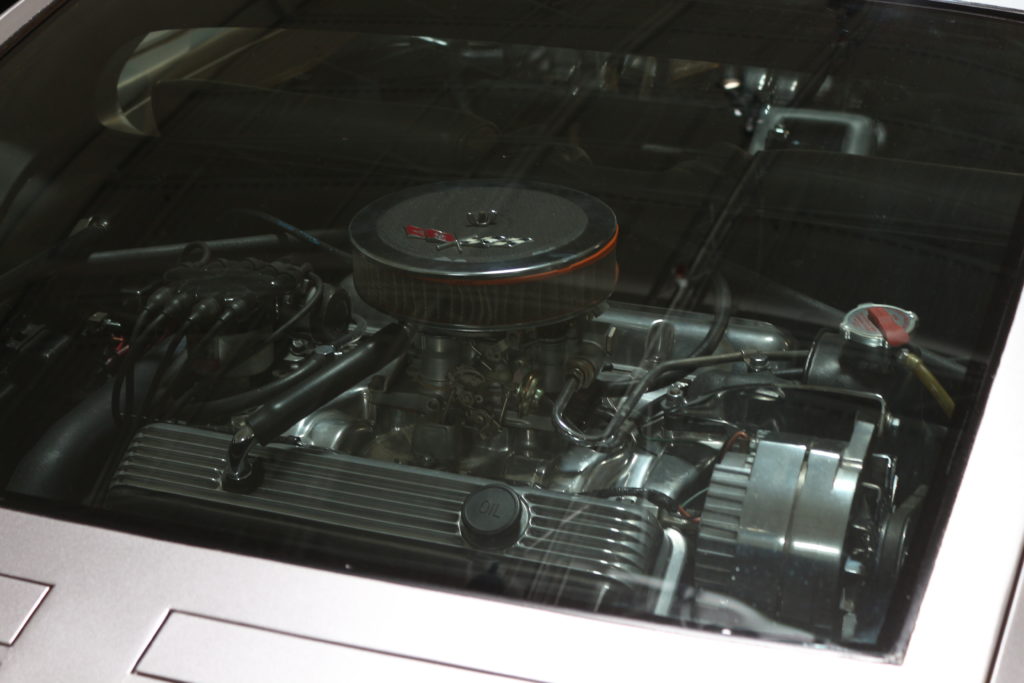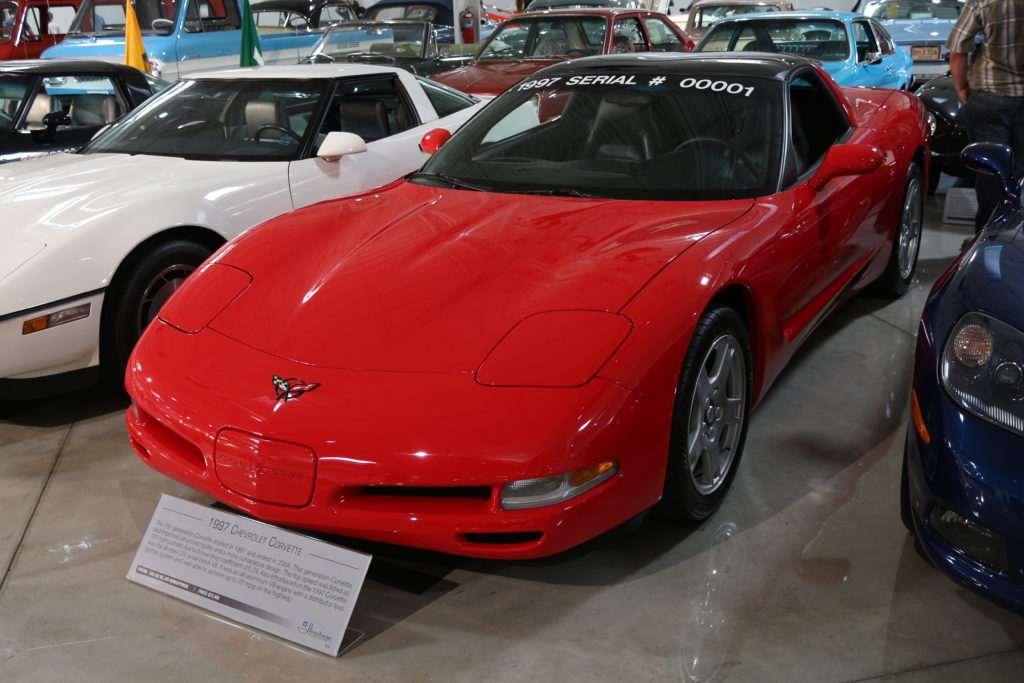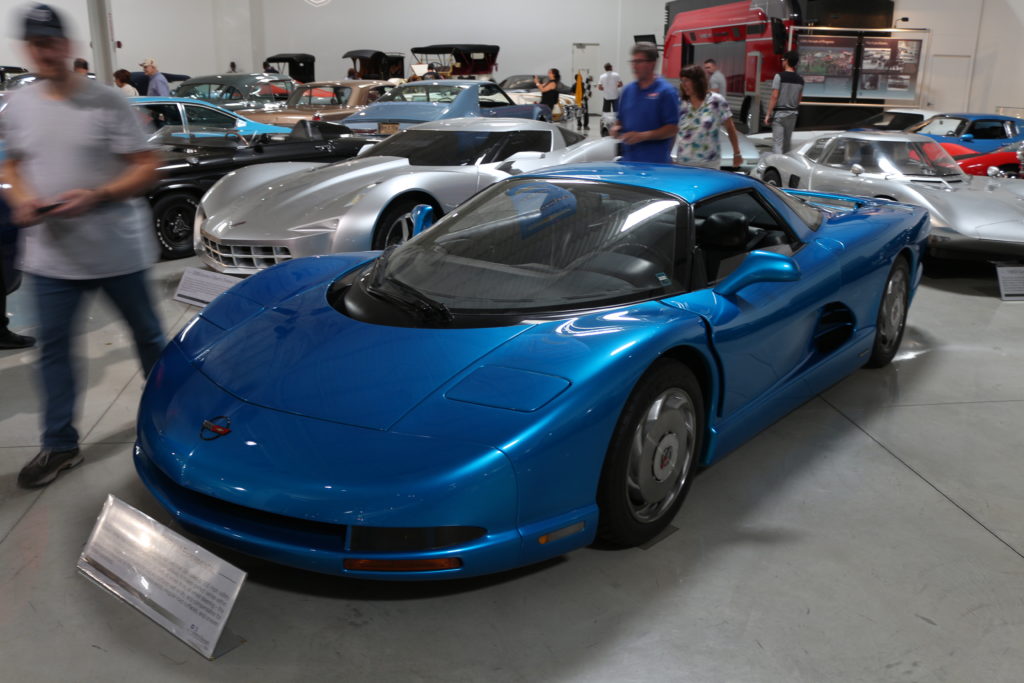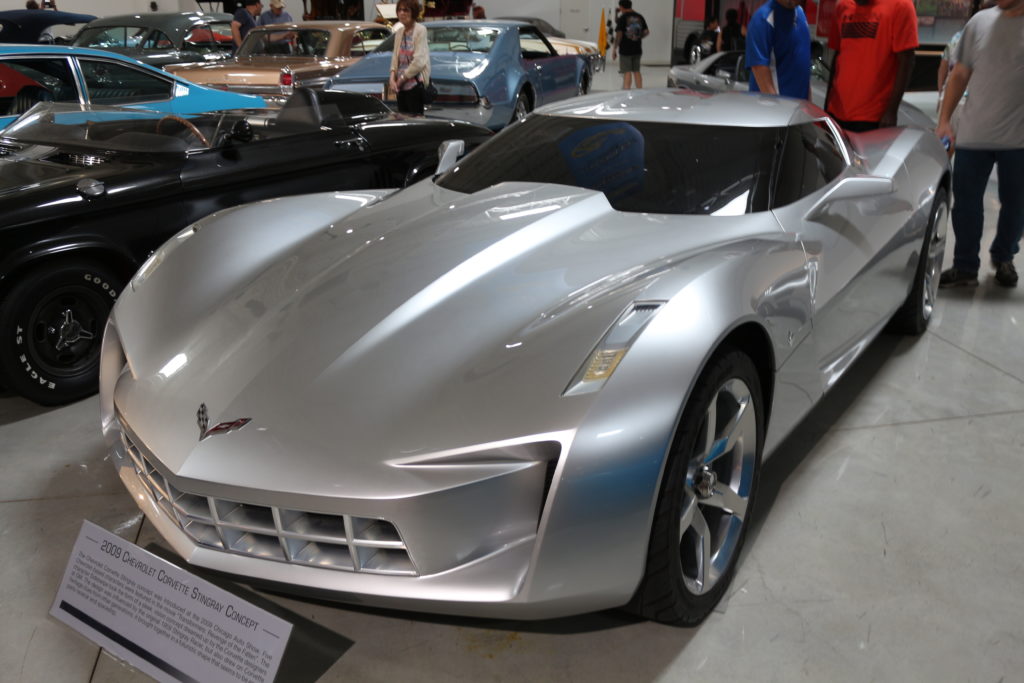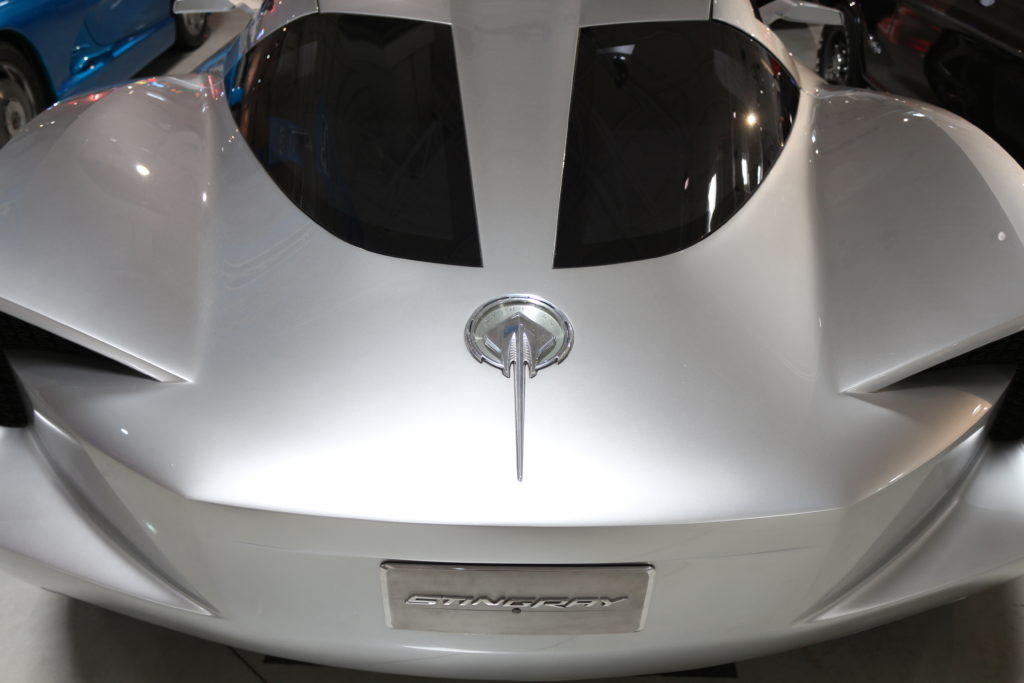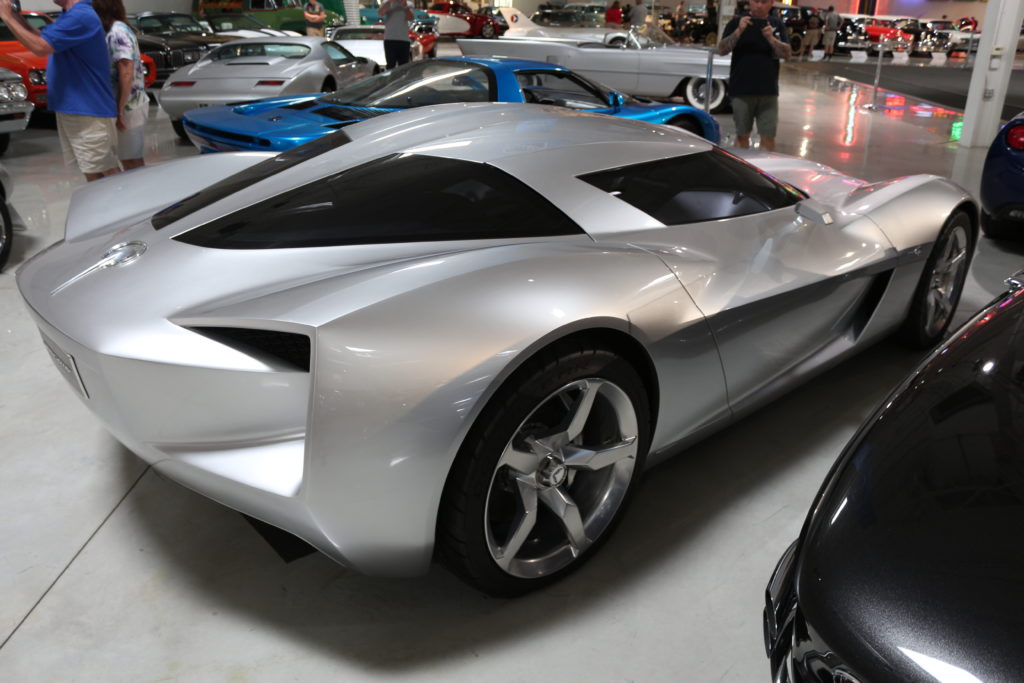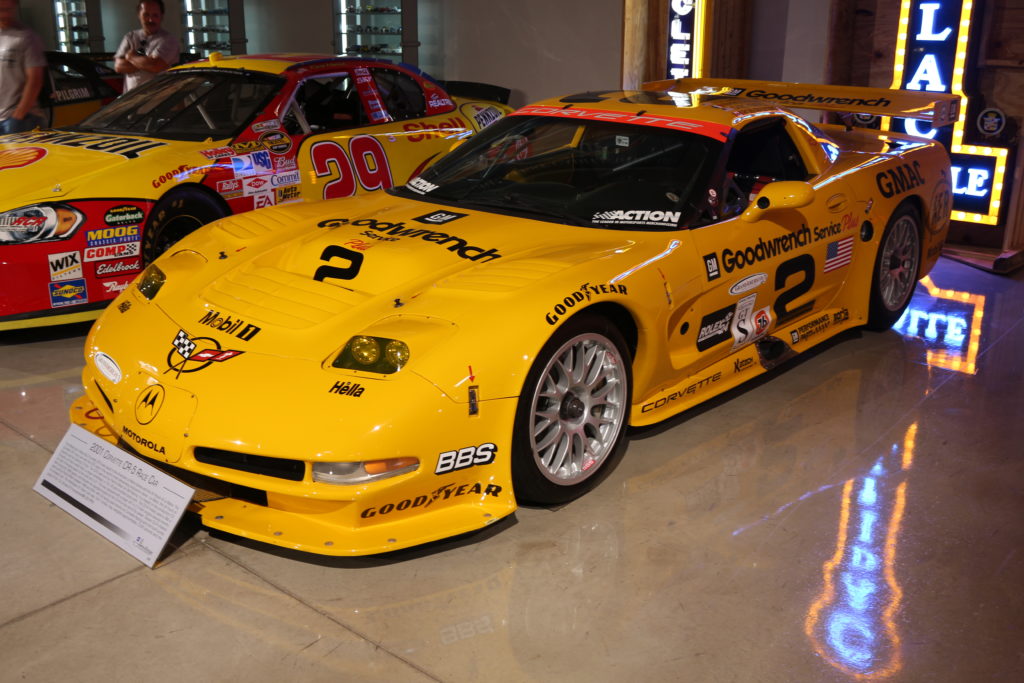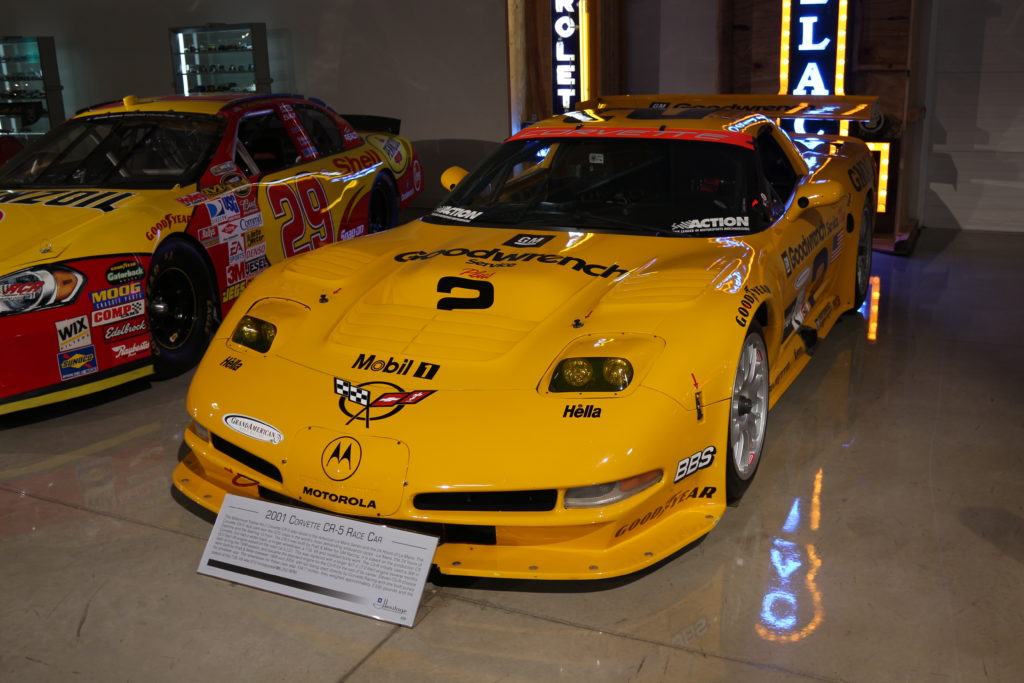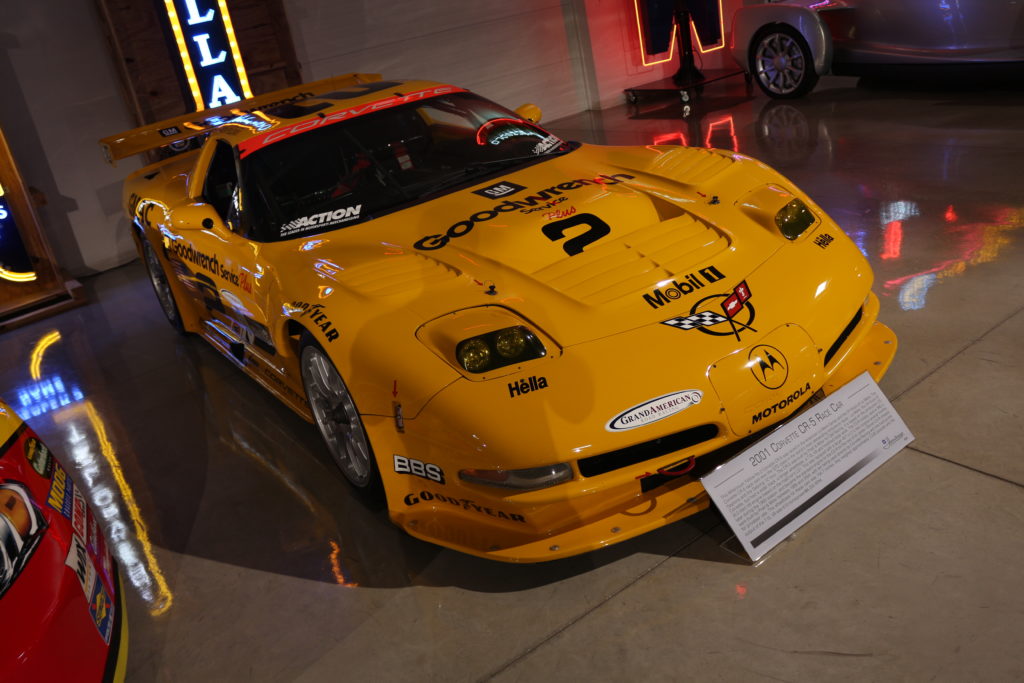General Motors Mecca: The Corvettes of GM Heritage Center

GM Heritage Center showcases special Corvettes, including some that never came to production.
We were very lucky to get the invite to check out the GM Heritage Center. This is holy ground for GM and Chevrolet enthusiasts. There is so much happening here, it’s truly jaw-dropping, so we are going to divide it into several posts. The Heritage Center is a “rotating” museum, so even if you have been here before, it’s very likely you will see some new, and interesting rides this time. Up first: Corvette.
Interestingly, the first generation C1 car was absent, instead, there is some beautiful C2 action. Though, the C1’s Blue Flame straight-six was present as a standalone display.
[Click on the images for full-size resolution.]
Tucked behind the classy C2 was an interesting face, and precursor to one of the most maligned Corvettes in the history of the name. It’s not a C3, it’s the Manta Ray concept. Below the car is a small blurb explaining the story behind this radical concept. It states that the Manta Ray was designed between 1965 and 1969, following the Mako Shark II concept. William Mitchell, the Head of GM Design Studio’s staff, was inspired by the powerful movement of the Manta ray through the ocean.
[Click on the images for full-size resolution.]
While the C3 was eventually strangled by crude early smog instruments, its aggressive styling is delightful. Also, notice the ZL-1 badging on the hood? Hmm…
These next design studies are clear precursors the C4 Corvette. Even a quick glance will have you knowing exactly what car these concepts led up to. Interesting, considering that they were penned in the early 1970s. Chevrolet was very much ahead of the curve with its styling department. These concepts look 10 years newer than they are.
Concept #1 is a 1972 designed “Reynolds Corvette Experimental,” which is interesting for a few reasons. First off, again, is the resemblance to C4, a fact that becomes more interesting when you learn that this car is mid-engined. GM has long experimented with a mid-engined Corvette. This one in particular was fitted with a 400CID (6.6L) V8 and a Turbo-Hydramatic automatic transmission. Notice the very luxury-geared interior. GM knew Corvette has long competed with its European contemporaries.
[Click on the images for full-size resolution.]
Very European-influenced, and very much an exotic car by the standards of 1972. In terms of styling, this looks like it could toe-to-toe with a contemporary Lamborghini. Perhaps a Muira?
Curiously, in only one year, the design language of Corvette evolved tremendously. This concept from 1973 clearly abandons the mid-engine proportions and reverts to a more conventional front-engine aesthetic with a long hood and short tail. In fact, the design evolved tremendously, moving closer to what the C4 generation Corvette ended up looking like.
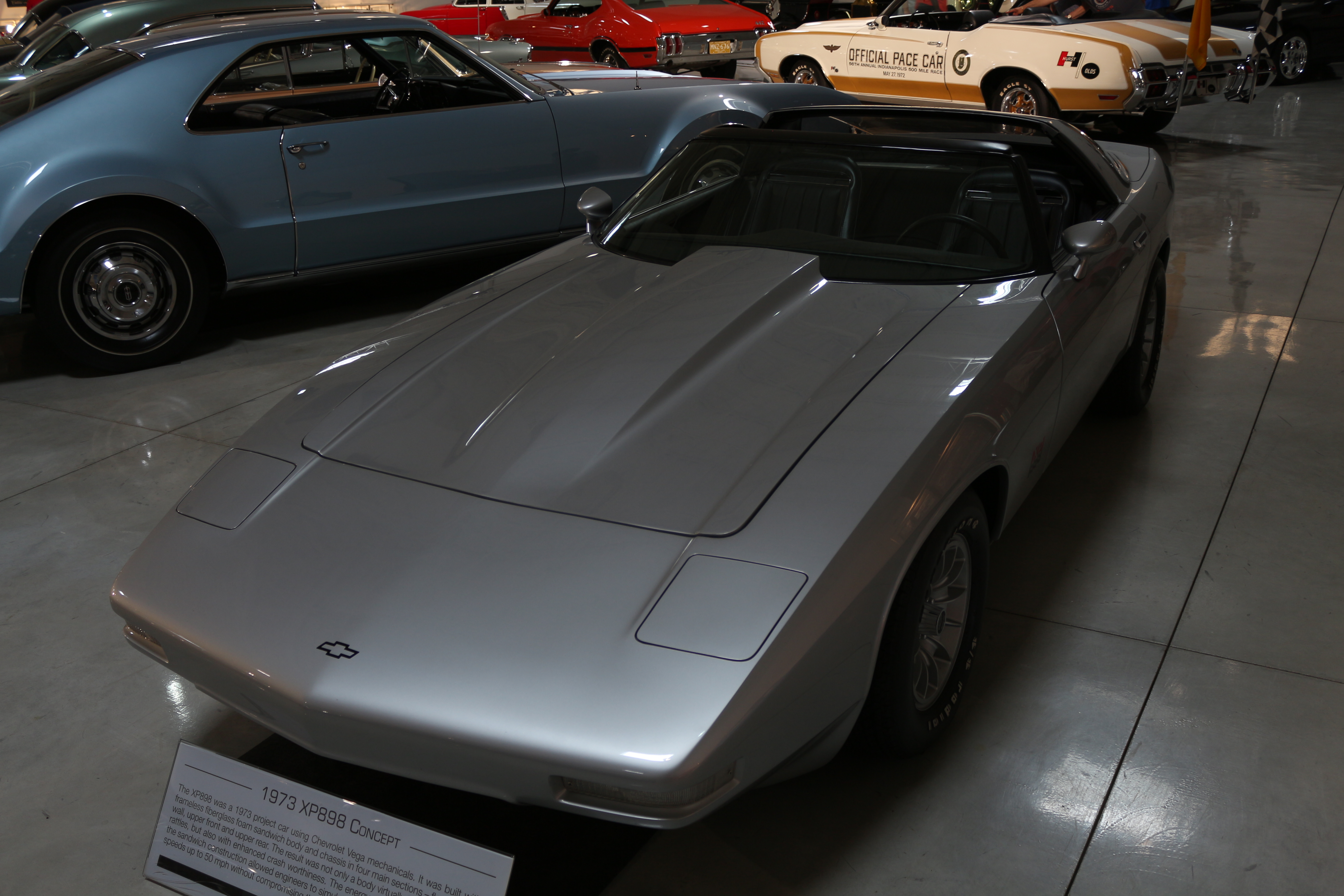
Interestingly, the placard in front of the “XP898” concept states that this vehicle used Vega underpinnings, perhaps indicating a smaller Corvette was being planned. Indeed, this concept was quite delicate in proportion compared the production cars sitting around it.
However, before we move on, I want to touch on one last 1970s Corvette concept. This is the 1977 Corvette Aerovette concept, and it is delightful. The Aerovette is connected to the 1972 Reynolds Corvette concept above, if you couldn’t tell by the styling. This car started with a 4-rotor, 420 horsepower Rotary engine, before evolving into a similar 400CID V8 as seen in the 1972 concept. Can we acknowledge the how impressive it is that General Motors, in such a short time span, embraced the Rotary engine, and built a 420 horsepower 4 rotor engine? That is nuts! Rotaries can be troublesome little devils, but it is a very novel technology, especially for the era.
[Click on the images for full-size resolution.]
While I lament the death of automotive pioneering, individuality and uniqueness, let’s take a look at the Aerovette. Being a 1970’s concept, there is a big greenhouse, a lot of glass and open air, making for a fantastic showcase of the engine. Based on the packaging, it seems like the Aerovette would be using some sort of rear-transaxle to put the power down.
Following the C4 was the very popular C5 Corvette. Check out the windshield banner: “1997 Serial # 00001.” Of course, as does seem to be the case, production Corvettes are paired with mid-engine concepts. Again, this mid-engine Corvette concept is very European in its aesthetic. In fact, there is an uncanny resemblance to the Jaguar XJ220. GM seems to continuously flirt with the idea of these mid-engine Corvettes, maybe it’s finally happening with the upcoming C8?
[Click on the images for full-size resolution.]
Peeking out of the corner is the C6 ‘Vette. For whatever reason, I skipped it. My bad. The C6 is cool, and I dig the Z06. Please skip the death threats. Perhaps I missed it because of this amazing C7 Stingray concept car. I remember seeing this concept years ago, and loving how aggressive the shape was. It still delivers, big time.
[Click on the images for full-size resolution.]
Ohhh, ahhh! Very reminiscent of the original Mako Shark and Sting Ray concepts from the ’60s. The split window tribute doesn’t go unnoticed, either. A lot of aerodynamic treatment going on here. Notice the small frontal area to reduce drag. However, there are wind channels that divert air through the fender openings. Additionally, the aggressive rear flanks are rakishly cut out, matching cut outs in the rear wheel wells, to reduce the amount of trapped air in the rear wheel openings. Aero is fun, kids.
Let’s wrap it up with one of the most iconic Corvettes in recent history. Growing up, this was the Corvette I had a model of in my room. This is the 2001 Corvette C5-R race car. As seen in the American Le Mans Series (ALMS), as well as the 24 Hours of Le Mans, this car brought a lot of trophies back to the General. This car won the GTS class at the 24 Hours of Le Mans. Developed by Pratt & Miller, it uses a 610 horsepower, 7.0L V8 and weighs 2530lbs in race trim. Impressive considering the widened body panels, additional aero components and of course, the full rigamarole of safety equipment. This thing is the business.
[Click on the images for full-size resolution.]
So, those are the Corvettes of GM Heritage Center. It is a huge facility, and there is so much more to see. We have a lot more to cover from our week in Michigan, so stay tuned.

